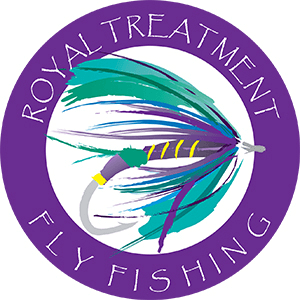Grasshopper Goo? Ask the Oracle

Mr. Oracle, Last week the question was about smell and adding scent to flies. I always mash grasshoppers on my grasshoppers, but was wondering, since grasshoppers spit up a tobacco-looking goo, can I just spit chewing tobacco on my flies? I look forward to your thoughts, oh wise one. Jim
Jim, that’s a very interesting question. I don’t typically add any scent or anything to my flies. Including body parts of small critters that might match my dry fly. Personally, I don’t think they can smell the guts and body parts of the intended fly, otherwise, we should use something a little more appealing like bacon. Historically line dressing was made from meat fat like red deer and I don’t think the fish were eating the fly line like spaghetti. I do know quite a few anglers that have some superstitions and scents for their flies. Bill Bakke of steelhead fame used to believe that dog and fox fur put off a scent that put off steelhead. My good friend Marty Sheppard believed that chew spit was an attractant.
So maybe there is something to your thought in using chew spit on the fly. It probably would have to be the right kind. I’m guessing Red Man would be the best kind. Although I’m thinking presentation over hopper goo might get better results.
Good luck and don’t choke on the tobacco and don’t kill too many hoppers!
Dear Oracle, Can I use a Euro leader setup and flies on my Tenkara rod? Thanks for taking my question, Shawn
Shawn, that’s a question I’ve heard a lot recently. To be honest with you the way you fish a Tenkara rod and a euro rod are similar. With the Tenkara rod, you are using an ultralight thin leader and trying to keep as much of it off the water as possible. We try to do the same thing with the euro setup.
First off I would fish this setup in smaller water like the upper Santiam or the Crooked rivers. Somewhere small that I would be able to co rain the fish, and also to be able to cover all of the water.
Here’s how I would set it up if it were me. I would make sure my overall leader wasn’t too long. So decide how much leader you can use and still be able to land the fish, so depending on the rod my total length from rod tip to bottom fly would be 12-14’. So working backward here’s what I would do. Depending on the river or stream I would use a total of 4-6’ of tippet, then a tippet ring, I’d use two feet of sighter, so that brings us to 6-8’ and the rest, 3-6’, would be some very thin amnesia or chameleon, probably 6lb. That would be a pretty good leader. Alternatively, you could use 4-6’ of tippet, a tippet ring and the next 6-8’ could be all sighter. As I said you don’t want the overall length to be too long otherwise you won’t be able to land the fish.
I would try to use as thin of a material as possible so I could get all of it up off the water, this will eliminate any sag or drag on the line. And give you a better direct connection to the flies.
Thanks for the question!
When a steelhead grabs my swung flies, do I give him line, or set up like on a trout? I keep losing fish at the grab. Do I need to wait longer, or strike sooner? Thanks, Larry
Larry, this is one of my favorite questions and is one of the two age-old disputes in steelhead fishing. To hold a loop or not to hold a loop, and set the hook or don’t set the hook. These two questions have people up in arms and everyone has at least one opinion if not two or three. Some people have a do what I say not what I do tactic also.
First off I will tell you that whatever you do if the fish doesn’t get hooked you did the wrong thing. Whether it was setting the hook, letting the fish eat too long, or giving it your loop. At some point they are all wrong and no matter what you did it will happen again, you second guess yourself and do the opposite and sometimes it works but at some point, it will be wrong. Fish aren’t robots, they don’t always act the same, and they are unpredictable. The best way to be more successful is to have more encounters and more experience.
Here are my thoughts and mine alone. Now that being said there are other anglers and guides that feel the same way. I don’t ever hold a loop, now there could be an argument either way but I want to feel the fish and I’m definitely not dropping the loop and trying to feed the fish the fly. Now some guides like new anglers to hold the loop to help them to not react to the take. Give them enough line that the fish can turn and build up momentum so the hook pins itself in the corner of the fishes mount. I use a tight line and a loose drag to let them turn and build momentum. So start with one and see what you like.
Now, as I said before, most guys have multiple opinions and this is where that comes in. If I’m fishing a skater I like my rod tip high and I definitely hold a loop. That way when the fish grabs they definitely have enough slack to make the turn and build up momentum. Also if you fish a tight line with a skater you usually pull the fly away, you don’t actually pull the fly away, there’s just not enough slack for the fish to grab it.
As for setting the hook whatever you do, don’t do it. It’s guaranteed to go badly. Set the hook lightly towards the bank once you feel the weight and it’s definitely on, that way you drive the hook home. You are not setting the hook in hopes of getting lucky and putting it in its lip.
Steelhead typically grab and connect in two different ways. The first one is a grab-and-run and it doesn’t matter if you had a loop or even thought about dropping it or whatever. It grabs the fly and is off to the races without a second thought. Those are the ones we want. The other winning grab goes something like this, you feel something, a light grab, a pull on the line, and you know something happened, but nothing exactly happened. This is where you need nerves of steel. Don’t do anything! Wait! Wait! Wait! Then there’s another pluck, a little pull you know something just happened definitively. You hold your breath waiting for the turn and run. DO NOT DO ANYTHING!!!! Nerves of steel. Breathe and wait because this is the make or break. The third try is the charm. This is where this fish commits or backs off. You’re still holding your breath, waiting and hoping, then you feel it, a little twist, a pull, a tug. You keep holding your breath. You have an internal dialogue “eat it already, turn and take the fly!” You don't react, just wait, and finally, the fish turns. You feel the weight of the fish. Its head starts to buck as it tries to shake the hook. You lean the rod firmly towards the bank. Not trying to rip the fly away from it or to rip its face off, just enough to drive the hook home and take out the slack. All of this happened in about 1.5 seconds but it seemed like an eternity. And it is the most addicting feeling, the adrenalin rush.
Now, all that being said there is sometimes a time when I set the hook. Sometimes a fish eats and eats and eats without feeling any weight. And sometimes that’ll happen two or three times and finally, out of desperation, I will set the hook with the hopes that just like flipping a quarter, I will win the toss. Honestly, there is no right answer except patience and experience. Keep swinging and have nerves of steel!
Thanks for all your questions, and I look forward to answering more in the weeks to come!
The Oracle





Comments
This is the best advice I have read.
I really appreciated the comment "most guys have multiple opinions " . It give a new person more ways to try hooking a fish.
The following two sentences are the best advice for any fishing.
Fish aren’t robots, they don’t always act the same, and they are unpredictable. The best way to be more successful is to have more encounters and more experience.
Honestly, there is no right answer except patience and experience. Keep swinging and have nerves of steel!
Thank you Mr. Oracle.